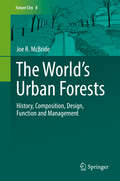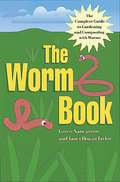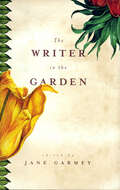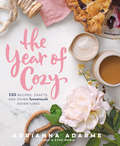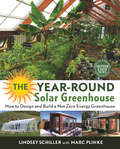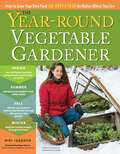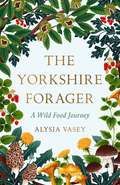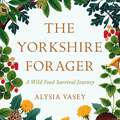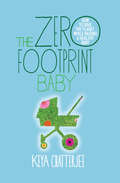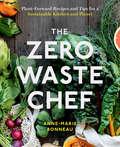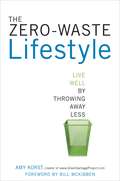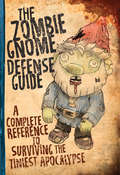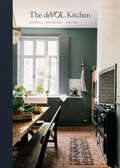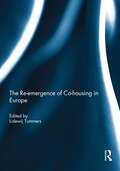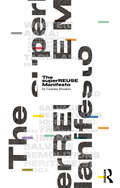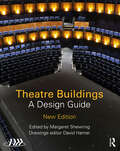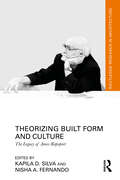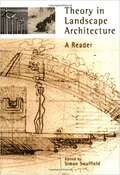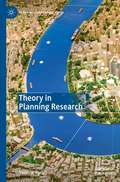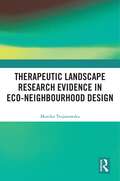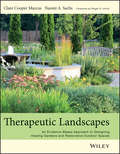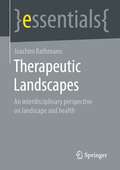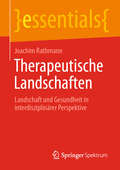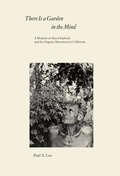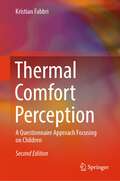- Table View
- List View
The World’s Urban Forests
by Joe R. McBrideThe purpose of this book is to examine urban forests in cities around the world. It will ask questions about the history, composition, structure, and management of trees in urban areas. Data for this book was collected in 33 cities across broad geographical areas known as biomes. Constraints and opportunities imposed on urban forest composition, design, and management by the ecological characteristics of these biomes will be examined. The book will also address the cultural and historical factors that influenced the characteristics of urban forests around the world.
The Worm Book: The Complete Guide to Gardening and Composting with Worms
by Loren Nancarrow Janet Hogan TaylorWorms are the latest (as well as, of course, perhaps the oldest!) trend in earth-friendly gardening, and in this handy guide, the authors of DEAD SNAILS LEAVE NO TRAILS demystify the world of worm wrangling, with everything you need to know to build your own worm bin, make your garden worm-friendly, pamper your soil, and much much more.From the Trade Paperback edition.
The Writer in the Garden
by Jane GarmeyShow me a person without any prejudice of any kind on any subject and I'll show you someone who may be admirably virtuous but is surely no gardener.--Allen Lacy. Idiosyncratic, determined, and occasionally obsessed, gardeners have a lot to say about their outdoor passion. THE WRITER IN THE GARDEN brings together a host of writing gardeners and gardening writers reveling in their quirks, confessing their shortcomings, and sharing their experiences. Combing through a hundred years of garden writing, editor Jane Garmey has discovered some great contemporary works and rediscovered many classics: "I am strongly of the opinion," declares Gertrude Jekyll, "that the possession of a quantity of plants, however good the plants may be themselves and however ample their number, does not make a garden." "It isn't that I don't like sweet disorder, but it has to be judiciously arranged," writes Vita Sackville-West. "Gardeners are--let's face it--control freaks," Abby Adams admits. "Who else would willingly spend his leisure hours wrestling weeds out of the ground, blithely making life or death decisions about living beings, moving earth from here to there, changing the course of waterways?" Drawing on the work of more than fifty writers, THE WRITER IN THE GARDEN covers subjects ranging from the beauty of the garden to ornery weeds, the hazards of rare plant collecting, and the tribulations of inclement weather. The collection includes a range of authors from both sides of the Atlantic: from Edith Wharton, who insists that we could all learn a thing or two about design from the Italians, to Stephen Lacey, who reveals that his most exciting gardening moments are spent in the bath. Some of the other writers in the collection are: E. B. White, Beverly Nichols, Ken Druse, Eleanor Perenyi, W. S. Merwin, Mirabel Osler, Henry Mitchell, Jamaica Kincaid, Robert Dash, Sara B. Stein, Michael Pollan, M.F.K. Fisher, Anne Raver, Patti Hagan, Paula Deitz.
The Year of Cozy: 125 Recipes, Crafts, and Other Homemade Adventures
by Adrianna AdarmeFrom the author of the popular blog, A Cozy Kitchen, comes a beautifully photographed one-stop-shop book with all the recipes and projects you’ll need for some cozy inspiration this holiday season—and all year long. You’ll love Adrianna Adarme’s easy-to-follow instructions and will enjoy getting lost in her warm and comforting photographs. Organized by the months of the year and by categories as “Live,” “Do,” and “Make, ” this book offers ideas for activities, recipes, and DIY projects that make the little moments in life just as exciting as the big. Adarme gives us special (but totally doable) things we can do for others and ourselves. From quick recipes to easy crafts, she focuses on simple, inexpensive undertakings that have a big reward: happiness. The Year of Cozy will surely inspire you to march into your kitchen and craft closet to make something you can truly be proud of.
The Year-Round Solar Greenhouse: How to Design and Build a Net-Zero Energy Greenhouse
by Lindsey Schiller Marc PlinkeComprehensive coverage of passive solar greenhouse design including material selection, building methods and how to store thermal energy using a variety of simple and innovative strategies. Over a dozen case studies provide real-life inspiration, capped off with how-to guidance for building a durable, energy-efficient greenhouse. Variations include underground and aquaponic greenhouses and integrating solar panels to grow off-grid, year-round.
The Year-Round Vegetable Gardener: How to Grow Your Own Food 365 Days a Year, No Matter Where You Live
by Niki Jabbour Joseph De ScioseEven in winter’s coldest months you can harvest fresh, delicious produce. Drawing on insights gained from years of growing vegetables in Nova Scotia, Niki Jabbour shares her simple techniques for gardening throughout the year. Learn how to select the best varieties for each season, the art of succession planting, and how to build inexpensive structures to protect your crops from the elements. No matter where you live, you’ll soon enjoy a thriving vegetable garden year-round.
The Yorkshire Forager: A Wild Food Survival Journey
by Alysia VaseyAlysia Vasey's earliest memories are of walking alongside her grandfather as they explored the West Yorkshire moors that they called home. As an adult, this love for wild things stayed with her, even as she learnt that her family's knowledge of edible plants were a legacy of a much darker time during the Second World War. After leaving Yorkshire in search of adventure, Alysia was eventually guided home by her motto: Be true to yourself and you will become the person you were meant to be. She left her traditional path and took a far wilder journey that gradually evolved into one of the UK's most successful foraging businesses, supplying some of the greatest chefs in the world and the best restaurants in the country Her achievements are the result of a bit of luck, a lot of knowledge and a huge amount of self-belief. Here, Alysia also shares not only her story, but also her vast knowledge of UK plant lore. A true Yorkshirewoman, Alysia tells it like it is, and The Yorkshire Forager is full of tales of her family's adventures and misadventures in their search for top quality ingredients - you never know who you might meet in the woods - making this book as entertaining as it is informative.
The Yorkshire Forager: A Wild Food Survival Journey
by Alysia VaseyAlysia Vasey's earliest memories are of walking alongside her grandfather as they explored the West Yorkshire moors that they called home. As an adult, this love for wild things stayed with her, even as she learnt that her family's knowledge of edible plants were a legacy of a much darker time during the Second World War.After leaving Yorkshire in search of adventure, Alysia was eventually guided home by her motto: Be true to yourself and you will become the person you were meant to be. She left her traditional path and took a far wilder journey that gradually evolved into one of the UK's most successful foraging businesses, supplying some of the greatest chefs in the world and the best restaurants in the country Her achievements are the result of a bit of luck, a lot of knowledge and a huge amount of self-belief.Here, Alysia also shares not only her story, but also her vast knowledge of UK plant lore. A true Yorkshirewoman, Alysia tells it like it is, and The Yorkshire Forager is full of tales of her family's adventures and misadventures in their search for top quality ingredients - you never know who you might meet in the woods - making this book as entertaining as it is informative.(P)2020 Headline Pubkishing Group Ltd
The Zero Footprint Baby
by Keya ChatterjeeIn our culture, pregnancy, birth, and childrearing are deeply connected to consumption and resource use. From the baby shower to the minivan and the larger apartment or first house, the baby-raising years are the most hyper-consumptive of our lives, and can set a family on an unsustainable track for years to come. The Zero Footprint Baby: How to Save the Planet While Raising a Healthy Baby shows how to raise a child with little to no carbon footprint. The book covers every issue new parents face, including pregnancy (what kind of birth has the lowest impact); what to feed your baby (breastfeed, formula, or both?), childcare (who should take care of the baby, and how?), and of course, diapering. Using a mix of personal anecdotes, summarized research, and clear guidance on how to pursue the most sustainable baby-rearing options, The Zero Footprint Baby is the resource and reference book for all new parents with green inclinations. Keya Chatterjee is the director for international climate policy at the World Wildlife Fund. She previously served as a climate change specialist at the US Agency for International Development, and also worked on communicating climate issues while at NASA. Keya's commentary on climate change policy and sustainability issues has been quoted in numerous media outlets, including USA Today, The New York Times, Fox News, The Associated Press, The Washington Post, and NBC Nightly News. She was also featured in a special issue of Politico on climate change highlighting the "muscle of the movement."
The Zero-Waste Chef: Plant-Forward Recipes and Tips for a Sustainable Kitchen and Planet
by Anne-Marie BonneauA sustainable lifestyle starts in the kitchen with these use-what-you-have, spend-less-money recipes and tips, from the friendly voice behind @ZeroWasteChef.In her decade of living with as little plastic, food waste, and stuff as possible, Anne-Marie Bonneau, who blogs under the moniker Zero-Waste Chef, has preached that "zero-waste" is above all an intention, not a hard-and-fast rule. Because, sure, one person eliminating all their waste is great, but thousands of people doing 20 percent better will have a much bigger impact. And you likely already have all the tools you need to begin. In her debut book, Bonneau gives readers the facts to motivate them to do better, the simple (and usually free) fixes to ease them into wasting less, and finally, the recipes and strategies to turn them into self-reliant, money-saving cooks and makers. Rescue a hunk of bread from being sent to the landfill by making Mexican Hot Chocolate Bread Pudding, or revive some sad greens to make a pesto. Save 10 dollars (and the plastic tub) at the supermarket with Yes Whey, You Can Make Ricotta Cheese, then use the cheese in a galette and the leftover whey to make sourdough tortillas. With 75 vegan and vegetarian recipes for cooking with scraps, creating fermented staples, and using up all your groceries before they go bad--including end-of-recipe notes on what to do with your ingredients next--Bonneau lays out an attainable vision for a zero-waste kitchen.
The Zero-Waste Lifestyle: Live Well by Throwing Away Less
by Amy KorstA practical guide to generating less waste, featuring meaningful and achievable strategies from the blogger behind The Green Garbage Project, a yearlong experiment in living garbage-free.Trash is a big, dirty problem. The average American tosses out nearly 2,000 pounds of garbage every year that piles up in landfills and threatens our air and water quality. You do your part to reduce, reuse, and recycle, but is it enough? In The Zero-Waste Lifestyle, Amy Korst shows you how to lead a healthier, happier, and more sustainable life by generating less garbage. Drawing from lessons she learned during a yearlong experiment in zero-waste living, Amy outlines hundreds of easy ideas--from the simple to the radical--for consuming and throwing away less, with low-impact tips on the best ways to: * Buy eggs from a local farm instead of the grocery store * Start a worm bin for composting * Grow your own loofah sponges and mix up eco-friendly cleaning solutions * Purchase gently used items and donate them when you're finished * Shop the bulk aisle and keep reusable bags in your purse or car * Bring your own containers for take-out or restaurant leftovers By eliminating unnecessary items in every aspect of your life, these meaningful and achievable strategies will help you save time and money, support local businesses, decrease litter, reduce your toxic exposure, eat well, become more self-sufficient, and preserve the planet for future generations.
The Zombie Gnome Defense Guide: A Complete Reference to Surviving the Tiniest Apocalypse
by Shaenon K. Garrity Andrew Farago Bryan HeemskerkCompiled from the notes of three zombie gnome experts (among them a Van Helsing-like zombie gnome hunter, a horticulture student, and a gardening columnist), this guide includes a detailed study of zombie gnome habits, hiding places, and offensive tactics, as well as an intimate history of the zombie gnome rise and eventual war with humanity. Empty-eyed, shambling, and hungry for human ankles, the zombie gnome population is on the rise, infesting the backyards of suburbia and attacking innocent lawn ornaments everywhere. While chances of human survival are minimal, readers can arm themselves with The Zombie Gnome Defense Guide to combat their tiny, undead enemies.Offering strategies for defense against a zombie gnome invasion, the book provides an extensive list of essential weapons and DIY home-fortification tips. Rare illustrations of zombie gnomes in their natural habitat and a priceless collection of never-before-seen photos (housed in an envelope in the back of the book) make this the go-to guide for survivalists in a zombie gnome-infested world.
The deVOL Kitchen: Designing and Styling the Most Important Room in Your Home
by Helen Parker Robin McLellan Paul O'LearyA stunningly photographed guide to designing and styling your kitchen, the most used and important room in the home, that showcases the philosophy and fundamentals of deVOL&’s iconic values&“When it comes to thoughtful craftsmanship and bespoke kitchen design, deVOL is the benchmark.&” – Joanna GainesdeVOL is much more than a kitchen company. Paul O&’Leary, deVOL&’s founder, began his journey in a small workshop in Leicestershire, England, more than thirty years ago. Since that day, deVOL has grown into something special, inspiring many people with its unique approach to designing and styling the most important room in the home. Written by deVOL&’s directors, Paul O&’Leary, Robin McLellan and Helen Parker, The deVOL Kitchen is about far more than kitchens. It has stories about their personal journeys, and it is full of passion, determination, and sometimes a little luck. Alongside the inspiring photographs of kitchens they&’ve designed and furnished, The deVOL Kitchen reveals childhood memories and fascinating experiences that have undoubtedly shaped their unique approach to designing, making, and running deVOL. From total rebuilds to a more modest sink and cupboard upgrade, The deVOL Kitchen will inspire you to design and style the space available to create a unique and stylish kitchen, whatever your budget. It encourages you to throw out the conventional rule book, draw your own plans, and incorporate fitted and existing free-standing furniture and found objects to create a beautiful room that is perfect for your needs. The book&’s charming photography takes you on a journey, not only of gorgeous kitchens but also into the workshops, studios, and showrooms of deVOL. See craftspeople at work, close-up images of forging metal and throwing clay and how these skills are used to make all of deVOL&’s accessories, many of which are as desired as their kitchens.
The re-emergence of co-housing in Europe
by Lidewij TummersAcross Europe, the number of co-housing initiatives is growing, and they are increasingly receiving attention from administrators and professionals who hold high expectations for urban liveability. Is co-housing a marginal idealist phenomenon, or the urban middle class’ answer to the current housing crisis? And has the development of theoretical insight and research kept up with the actual expansion of co-housing as a practice? These questions were raised during the first European conference on co-housing research, which took place in Tours, France, in March 2012. Both the conference and this book aim to move beyond case-studies, and to look more particularly at the implications and wider perspective of the current co-housing trend.Using the specific vocabulary of different disciplines and geographic regions, the contributions to this book analyse the underlying thinking behind, and the expectations projected on, diverse models of collaborative housing. The authors are aware of the qualities of contemporary co-housing, but they go beyond advocacy to investigate the conditions under which co-housing can be successful as a strategy for housing provision; can offer solutions for sustainable urban development; or indeed can contribute to involuntary or intentional gentrification. This book was originally published as a special issue of the Journal of Urban Research and Practice.
The superREUSE Manifesto
by Graeme BrookerThe superREUSE Manifesto is a critical exploration of ideas, research and practices in reuse. -Reuse identifies insights into cities, buildings, interiors and objects constructed through working with extant material. Super is an elevated pitch for a 21st century that is characterised by responses to the challenges of the climate emergency and social justices. The superREUSE Manifesto coalesces ideas in the designed and built environment that react and work with these challenges. It is an uncompromising collection of ideas and propositions designed to stimulate its reader to rethink their position in relation to how we must transform everything into its superREUSE.
Theatre Buildings: A Design Guide
by Margaret Shewring David HamerIn 2021, its Diamond Jubilee year, the Association of British Theatre Technicians (ABTT) undertook to revise Theatre Buildings: A Design Guide (Routledge, 2010). This new edition (Routledge, 2023) has substantially re-written text with fresh images and entirely new reference projects, providing essential guidance for all those engaged in the design of theatre buildings. Edited by Margaret Shewring (Emeritus Reader, University of Warwick, former Director of the Postgraduate Diploma and MA in Theatre Consultancy), this new publication is written by a team of international experts, architects, theatre consultants, acousticians, engineers and industry professionals led by Tim Foster (Foster Wilson Size) and Robin Townley (CEO of the ABTT). It provides an invaluable resource for those looking to build, remodel or conserve theatre buildings, taking into account the significant changes which have taken place in the last twelve years in all aspects of theatre design and technical practice. It locates those changes in the wider context of the need for sustainability in the theatre industry in response to the climate emergency, inclusivity, diversity of access, placemaking and concerns for health and wellbeing. This new edition provides guidance for anyone who seeks inspiration and encouragement to create or improve a place of entertainment or who seeks to understand what might be required to accommodate an audience for the presentation of live performance and the successful use, operation and organisation of such a venue. Its generous format and the thirty-two new reference projects, more than 260 high-resolution colour images and 175 diagrams and specially commissioned plans make it accessible and informative both to the general reader and the professional specialist.
Theorizing Built Form and Culture: The Legacy of Amos Rapoport (Routledge Research in Architecture)
by Kapila D. Silva Nisha A. FernandoIn this collection of essays, Theorizing Built Form and Culture: The Legacy of Amos Rapoport – a felicitation volume to celebrate the significance of Professor Amos Rapoport's lifelong scholarship – scholars from around the world discuss the analytical relevance, expansion, and continuing application of these contributions in developing an advanced understanding of mutual relationships between people and built environments across cultures.Professor Amos Rapoport has espoused an intellectual and theoretical legacy on environmental design scholarship that explains how cultural factors play a significant role in the ways people create and use environments as well as the way environments, in turn, influence people’s behavior. This volume presents a hitherto-not-seen, unique, and singular work that simultaneously articulates a cohesive framework of Rapoport’s architectural theories and demonstrates how that theoretical approach be used in architectural inquiry, education, and practice across environmental scales, types, and cultural contexts. It also acknowledges, for the very first time, how this theoretical legacy has pioneered the decolonizing of the Eurocentric approaches to architectural inquiry and has thus privileged an inclusive, cross-cultural perspective that laid the groundwork to understand and analyze non-Western design traditions. The book thus reflects a wide range of cross-cultural and cross-contextual range to which Professor Rapoport’s theories apply, a general notion of theoretical validity he always advocated for in his own writings.The volume is a paramount source for scholars and students of architecture who are interested in understanding how culture mediates the creation, use, and preservation of the built environment.
Theory in Landscape Architecture: A Reader (Penn Studies In Landscape Architecture)
by Simon SwaffieldHere, for students and practitioners of landscape architecture, architecture, and planning, is a single resource for seminal theoretical texts in the field. Essential for understanding the specific connections that have been made between landscape and social, cultural, and political structures, Theory in Landscape Architecture reminds readers that the discipline of landscape architecture can be both practical and formally challenging. <p><p> Covering the past fifty years of theory, this primer makes an important contribution to a student's emerging professional ethics.
Theory in Planning Research (Planning, Environment, Cities)
by Yvonne RydinDoing research is an essential element of almost all programmes in planning studies as well as related areas such as geography and urban studies, from undergraduate, through Masters to doctoral programmes. While most texts on such research emphasise methodologies, this book is unique in addressing how theoretical frameworks and perspectives can inform research activity. Providing both a concise introduction to a wide range of such theories and detailed engagement with cases of planning research, it provides the reader with the insights necessary to conduct theory-informed research. It offers an understanding of how the choice of a theoretical framework has implications for the focus of the research, the precise research questions addressed and the methodologies that will be most effective in answering those questions. Through practical advice and published examples it will support planning researchers in doing stronger, more widely-applicable research, which answers key questions about planning systems and their role within our societies.
Therapeutic Landscape Research Evidence in Eco-neighbourhood Design
by Monika TrojanowskaThis book presents how to recreate therapeutic landscapes in everyday places of eco-neighbourhoods. The concept of eco-neighbourhoods goes beyond the traditional form of a residential district. Eco-neighbourhoods are characterized by many aspects related to sustainability, including protection of the environment, building social capital, ensuring a high quality of life with low economic costs, and promoting social and environmental justice. The presented work aims to systematize these phenomena and interpret them.The action to take care of our common home, the Earth, starts locally. Creating townscapes that can promote everyday health could improve the standards of living on our planet. In both hemispheres, the majority of people live in cities; therefore, examples of good practices described in this book come from all inhabited continents. Education is the most empowering tool, which can change the future for many. Implementing eco-neighbourhoods may bring well-deserved change and hope to people in less-favoured locations of the globe.This book will be of interest to practitioners and students of architecture, civil and environmental engineering, landscape design, spatial management, urban planning, and related fields.
Therapeutic Landscapes
by Clare Cooper Marcus Naomi A SachsThis comprehensive and authoritative guide offers an evidence-based overview of healing gardens and therapeutic landscapes from planning to post-occupancy evaluation. It provides general guidelines for designers and other stakeholders in a variety of projects, as well as patient-specific guidelines covering twelve categories ranging from burn patients, psychiatric patients, to hospice and Alzheimer's patients, among others. Sections on participatory design and funding offer valuable guidance to the entire team, not just designers, while a planting and maintenance chapter gives critical information to ensure that safety, longevity, and budgetary concerns are addressed.
Therapeutic Landscapes: An Interdisciplinary Perspective on Landscape and Health (essentials)
by Joachim RathmannJoachim Rathmann presents the interdisciplinary relationships between landscapes and health. Nature is to be regarded as an elementary health resource, because movement in near-natural surroundings has demonstrably positive influences on human health and is summarized in many ways in the concept of "therapeutic landscapes". Natural areas offer an important resource for strengthening health, especially to an aging society, which can also be measured economically. The author presents natural science, social science, and humanities research in a clear, understandable, and concise manner for a broad readership. At the same time he gives suggestions for a conscious handling of the sensitive resource landscape and for a regular observation of nature. This springer essential is a translation of the original German 1st edition essentials,Therapeutic landscapes by Joachim Rathmann, published by Springer Fachmedien Wiesbaden GmbH, part of Springer Nature in 2020.The translation was done with the help of artificial intelligence (machine translation by the service DeepL.com). A subsequent human revision was done primarily in terms of content, so that the book will read stylistically differently from a conventional translation. Springer Nature works continuously to further the development of tools for the production of books and on the related technologies to support the authors.
Therapeutische Landschaften: Landschaft und Gesundheit in interdisziplinärer Perspektive (essentials)
by Joachim RathmannJoachim Rathmann stellt die interdisziplinären Bezüge von Landschaften und Gesundheit dar. Die Natur ist als elementare Gesundheitsressource zu betrachten, denn Bewegung in naturnaher Umgebung hat nachweislich positive Einflüsse auf die menschliche Gesundheit und wird im Konzept der „Therapeutischen Landschaften“ vielfältig zusammengefasst. Naturräume bieten vor allem einer älter werdenden Gesellschaft eine wichtige, auch ökonomisch messbare Ressource für die Stärkung von Gesundheit. Der Autor bereitet natur-, sozial,- und geisteswissenschaftliche Untersuchungen für eine breit gefächerte Leserschaft verständlich, anschaulich und übersichtlich auf. Gleichzeitig gibt er Anregungen für einen bewussten Umgang mit der sensiblen Ressource Landschaft und zu einer regelmäßigen Naturbeobachtung.
There Is a Garden in the Mind
by Paul A. LeeThere Is a Garden in the Mind presents an engaging look at the work and life of pioneering organic gardener Alan Chadwick and his profound influence on the organic farming movement. In this wide-ranging and philosophical memoir, author Paul Lee recounts his first serendipitous meeting with Chadwick in Santa Cruz, California, in 1967, and their subsequent founding of the Chadwick Garden at UC Santa Cruz, the first organic and biointensive garden at a U.S. university. Today, there are few who would dispute the ecological and health benefits of organically produced food, and the student garden project founded by Chadwick and Lee has evolved into a world-renowned research center that helps third-world farmers obtain high yields using organic gardening. But when Chadwick and Lee first broke ground in the 1960s, the term "organic" belonged to the university's chemists, and the Chadwick Garden spurred a heated battle against the whole system of industrial existence. Lee's memoir contextualizes this struggle by examining the centuries-old history of the conflict between industrial science and organic nature, the roots of the modern environmental movement and the slow food movement, and the origin of the term "organic." His account of Chadwick's work fills in a gap in the history of the sustainable agriculture movement and proposes that Chadwick's groundwork continues to bear fruit in today's burgeoning urban garden, locavore, and self-sufficiency movements.Table of contents:Chapter one The English Gardener ArrivesChapter two The English Gardener Goes to WorkChapter three The Garden PlotChapter four Goethe the Vitalist contra Newton the PhysicalistChapter five Urea! I Found It!Chapter six USA and Earth DayChapter seven The MethodChapter eight Chadwick DepartsChapter nine A Moral Equivalent of WarChapter ten The Death of ChadwickChapter eleven California Cuisine and the Homeless Garden ProjectChapter twelve A Biodynamic Garden on Long IslandChapter thirteen Chadwick's LegacyFrom the Trade Paperback edition.cy
Thermal Comfort Perception: A Questionnaire Approach Focusing on Children (Springerbriefs In Applied Sciences And Technology Ser.)
by Kristian FabbriThis book offers a comprehensive exploration of children's understanding and experiences of thermal comfort. The book provides a methodology for evaluating comfort that takes into account the unique perspectives of children. The first part of the book provides an overview of the history of thermal comfort, the human body and environmental parameters, and common thermal comfort indexes. It also offers guidelines for creating questionnaires that accurately assess children's perceptions of indoor thermal comfort. The book then delves into children's understanding of the concepts of comfort and energy, as well as the factors that influence their perception of these concepts. It addresses the psychological and pedagogical aspects of thermal comfort judgment, as well as the architectural and environmental characteristics that contribute to children's perceptions of comfort. First published as Indoor Thermal Comfort Perception, this updated edition also includes new sections on architecture and sensitivity, exploring the impact of classroom spaces on learning, and outdoor education and thermal comfort outdoors, based on qualitative research. These additions provide valuable insights for future studies on these topics. While physical parameter measurements and comfort indexes are useful in thermal comfort, the book emphasizes the importance of ergonomic assessments in the form of questionnaires, which offer unique insights into children's experiences. The book fills a critical gap in understanding children's perceptions of thermal comfort and is essential reading for HVAC engineers, architects, environmental psychologists, and researchers in the medical and cognitive fields.
